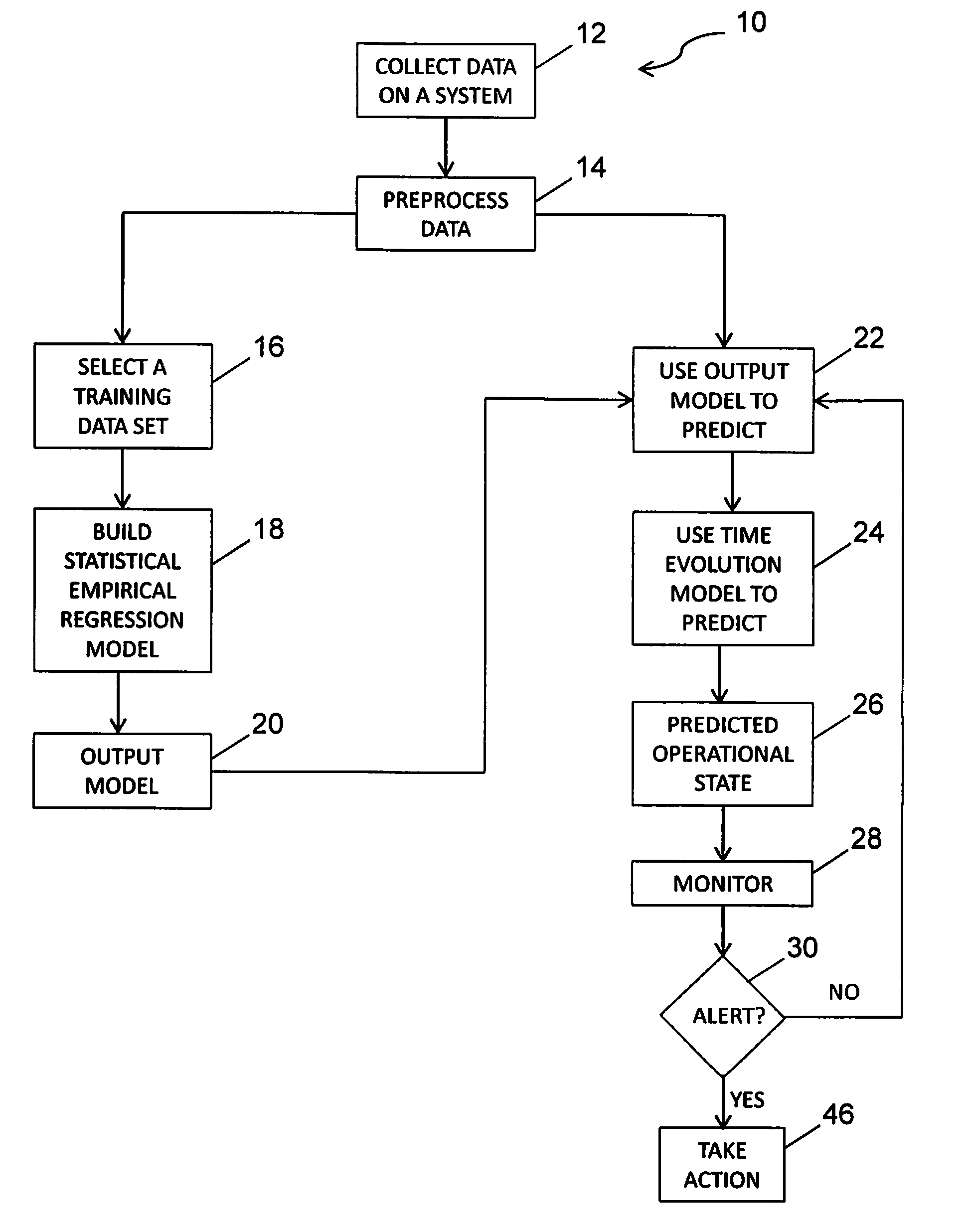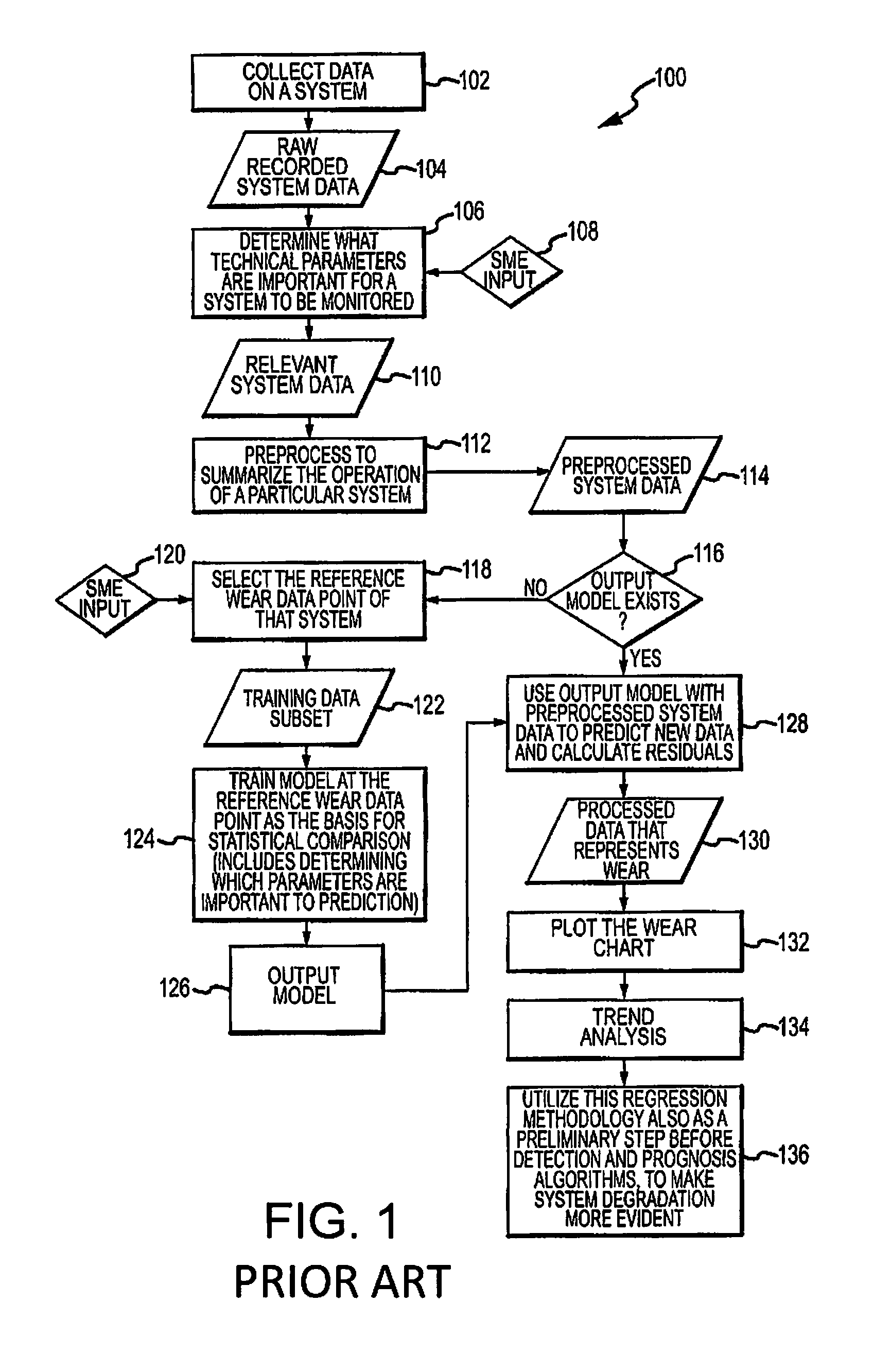Coupling time evolution model with empirical regression model to estimate mechanical wear
a technology of mechanical wear and evolution model, applied in the field of data-driven method and system for estimating and tracking accurate operational states of mechanical systems, can solve problems such as performance decline, aircraft may not reach cruise during every flight, and comparable error rates, so as to reduce variability of normalized egt, reduce variability, and reduce variability
- Summary
- Abstract
- Description
- Claims
- Application Information
AI Technical Summary
Benefits of technology
Problems solved by technology
Method used
Image
Examples
Embodiment Construction
[0020]The method and system of the disclosed embodiment may be used with any mechanical system that produces data that can be analyzed, such as engines, turbines, oil systems, water cooling systems, or for non-traditional systems that have periodic observations, such as tires and brakes found in aircraft, automobiles and trucks, military vehicles, and other vehicles. Accordingly, one of ordinary skill in the art will recognize and appreciate that the method and system disclosed herein can be used in any number of applications involving the estimating or monitoring of one or more operational states of a mechanical system over time.
[0021]One goal of any integrated vehicle health management program for aircraft is to monitor its engine's health, in particular, engine performance. To get the same thrust output as the engine wears, the engine requires more fuel, and so the engine's exhaust gas temperature (EGT) increases. However, environmental, flight, and other engine parameters also a...
PUM
 Login to View More
Login to View More Abstract
Description
Claims
Application Information
 Login to View More
Login to View More - R&D
- Intellectual Property
- Life Sciences
- Materials
- Tech Scout
- Unparalleled Data Quality
- Higher Quality Content
- 60% Fewer Hallucinations
Browse by: Latest US Patents, China's latest patents, Technical Efficacy Thesaurus, Application Domain, Technology Topic, Popular Technical Reports.
© 2025 PatSnap. All rights reserved.Legal|Privacy policy|Modern Slavery Act Transparency Statement|Sitemap|About US| Contact US: help@patsnap.com



